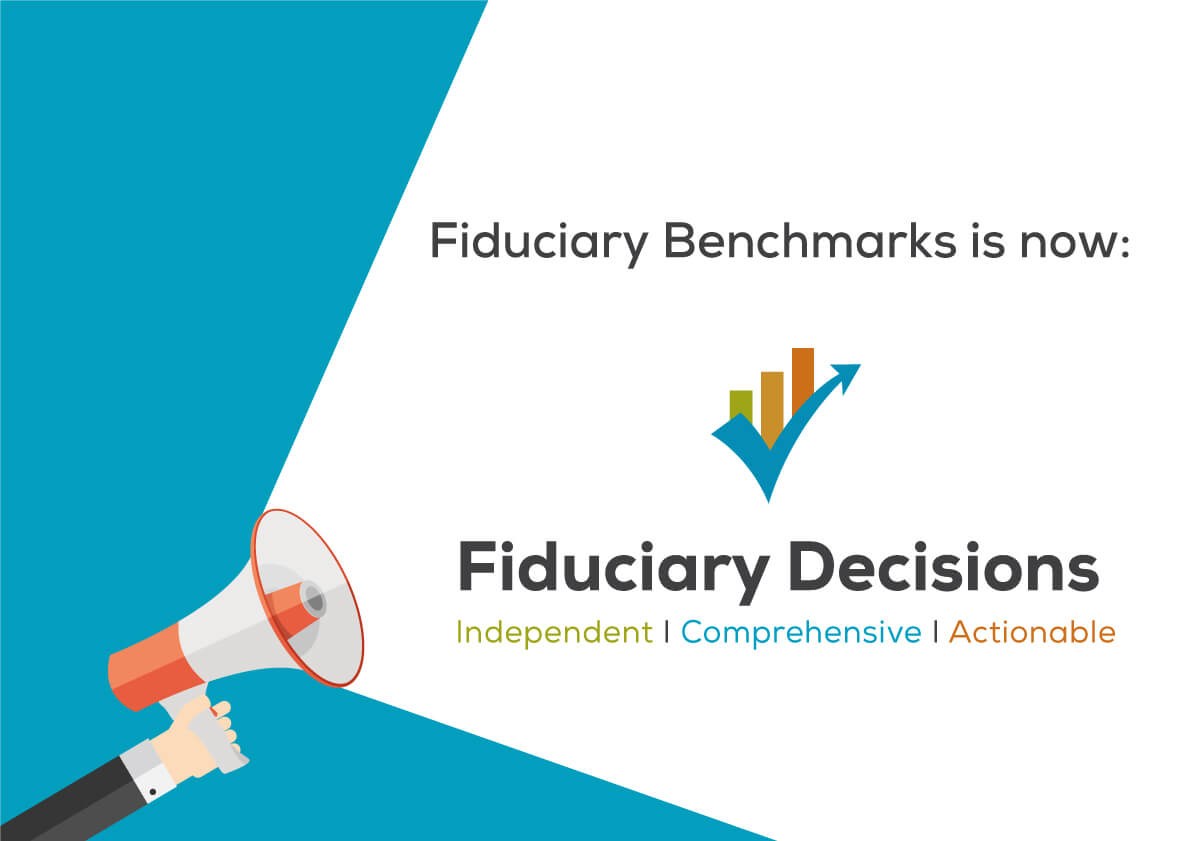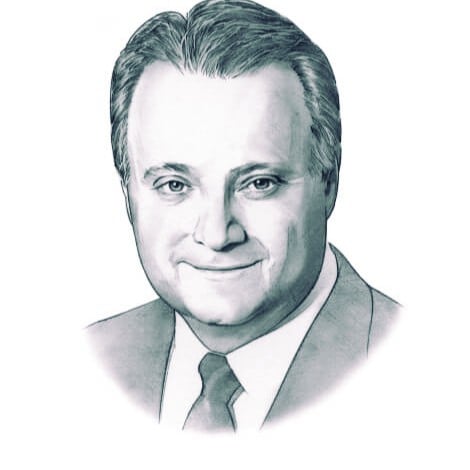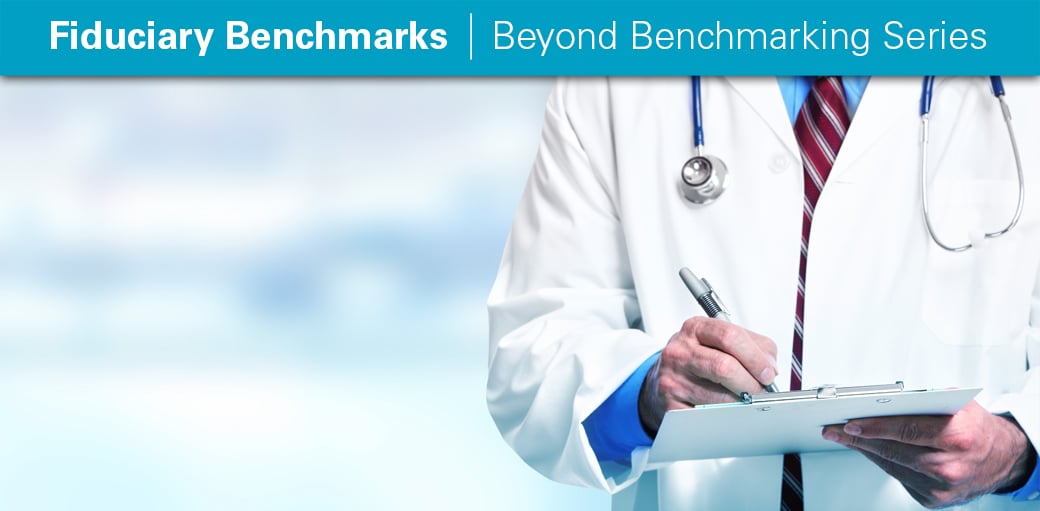The Road from “Benchmarking” to “Decisions”
by Tom Kmak, Chief Executive Officer
Apr 15, 2021

As we rebrand AND reorient our company, the lessons of the past will help shape our future
Chapter 1- Fees Without Value is a Meaningless Exercise
When I left JPMorgan in October of 2007, I was convinced the industry needed a Fee Benchmarking solution that focused not only on fees, but more importantly, on Value. Being somewhat of a math “geek”, this belief was based on the fact that higher savings rates, better investing behavior and stopping “leakage” can be absolutely proven to be more impactful to retirement outcomes than lower fees. In addition, I knew that if you spent more than 5 minutes in this industry, you would know that not all plans receive the same set of services, from the same types of service providers.
Thus, the first 18 months of our company were spent researching, analyzing, and designing our initial benchmarking report and drafting the associated patent. In fact, it took us over 120 design variations before we could agree on the content of our first report – the Fees, Plan Design and Participant Success Measures report in 2009. And it took us another 7 months to collect enough REAL data to produce a report we would be proud to show a plan fiduciary.
Now, whenever I think I know what someone is thinking, my brain flashes to the famous scene in the Clint Eastwood movie Dirty Harry where he states: “I know what you’re thinking…did he fire six shots or only five?” Or in this case, “I know what you’re thinking…how in the world could it take 120 versions to get the first report right?” As I replay those days in my head, maybe we had too many cooks in the kitchen – after all there are quite a few names on our benchmarking patent application. Or maybe we were not as smart or as experienced as we needed to be – that’s possible.
But as I think back, the real reason it took us so many versions was this: evaluating the job that someone else does for a living is a BIG responsibility. And thus, it was ESSENTIAL that we show not only what people were being paid, but also what they were delivering to their plan sponsors and participants. Hence, the name Fiduciary Benchmarks – not Fiduciary Fees or Fiduciary Costs or Fiduciary Charges, but Fiduciary Benchmarks, with a tag line of Independent, Comprehensive, and Informative.
This report was transformative. No longer were committee meetings spent huddled around an Excel spreadsheet. Now there was a uniform report that enabled service providers and committees to see fees and value. Advisors began to use it to differentiate their service offerings. Recordkeepers used it to contextualize their fee structures and service models. And most importantly, fiduciaries had a report that emphasized quite clearly that “Fees without Value is a meaningless comparison”.
Chapter 2 – Keep Those Cards and Letters Coming!
I used to belong to a golf club that had a Suggestion Box. The only problem with it was that it was in the middle of an island about 15 feet up in a tree. I am glad to say, however, that is NOT how we approach suggestions from our clients – we realize our clients are very smart and seasoned professionals and that most of what they have to say is not self-serving (note that I said “most” 😉). We realize they want to make the service better and again, if you are going to sit in judgment of someone, it makes a whole lot of sense to hear what they think we can do to improve. Thus, over the years, we have made numerous improvements to our service as shown below:
- 2011 – we introduce Plan Profile, an easy-to-use and immediately available report that introduces benchmarking to prospects
- 2012 – we build a simple 408(b)(2) disclosure that leverages our fee data in a disclosure that exactly follows the 408(b) regulation (this regulation also leads to a surge in benchmarking)
- 2014 – we introduce v2 of our benchmarking service that now concentrates on Quality, Service, Value – this new version known as the Value and Fee Report also introduces FEEPOINT® which was a groundbreaking benchmarking technique that allowed a fiduciary to see the market value of “Extras” such as a higher fiduciary status or more meetings
- 2014 – we also modify our technology to allow people to produce their own report
- 2015 – we develop an Executive Summary report that can be reviewed in less than 15 minutes
- 2015 – we develop an Analytics capability that allows for detailed analysis of fee & value data
- 2016 – we introduce FeeChecker which allows someone to “check” their fees in literally seconds
- 2017 – we build our most concise benchmarking report known as FeeBuilder that is only 2 pages long but still emphasizes Quality, Service, Value and Extra Credit
- 2017 – we also venture into the Form 5500 space to allow identification of prospects along with our Plan Profile and FeeBuilder reports
- 2019 – we introduce a more “friendly” version of the Executive Summary report known as the Presentation Style Report
As I look back on these improvements, I note that clients may not have come up with the actual idea we implemented, but they were ESSENTIAL in identifying ways we could improve. Comments like how can this be easier, or how this can this be faster or how can you account for (fill in the blank) helped us improve each and every year. So, no matter what our name is, or no matter what we decide to build, we please ask that you “Keep Those Cards and Letters Coming!”
Chapter 3 – Beyond Benchmarking
In 2015, President Obama planted the seed for what would become the DOL’s Fiduciary Rule with these words “It’s a very simple principle: You want to give financial advice, you’ve got to put your client’s interests first.” And with that, the Fiduciary Rule was fast tracked and became a final rule in April 2016. FBi was approached by our clients with the idea that what we had built for benchmarking could be leveraged to solve for the requirements of the Fiduciary Rule. And you know what? They were right! We were able to build a solution that would help the Service Providers who evaluated and processed IRA rollovers in less than a year. This new service followed our core tenants of ensuring that both fees and value were considered while adding an important new arrow to FBi’s quiver – compliance solutions. Unfortunately, the rule was vacated, but our investment in this area has proven invaluable.
Venturing into the IRA Rollover business taught us something about ourselves: that our core competency is building decision support systems that provided the right information in the right way. Thus, in April of 2018 we embarked on an even more ambitious project: could we build a comprehensive practice management tool that addressed the needs of retirement plan advisors? After six months of intense study of the marketplace, in mid-November of 2018 we started the design of the Business Management Dashboard, or what we call the BMD. The prototype for this next level practice management solution was finished in only 75 days and we began to show it to our prestigious list of Advisor clients.
The reaction was very positive as the BMD included all of the following:
- Snapshot Metrics of Your Practice, Your Plans and Your Participants
- Workflow and Task Management including a Meeting and Hours Tracker which enabled our clients to track their time via a simple iPhone or Android app and report it back to their clients so the fiduciaries could have a full picture of the “value” being provided
- A summary of your benchmarking requests
- A prospecting funnel tied to a Form 5500 Search Tool leveraging our popular Plan Profile report
- A comprehensive document vault to protect Plan Sponsors upon audit
- And an open architecture strategy to allow you to keep your investment analytics tools or RFP tools or financial wellness tools
So, we introduced the BMD to the marketplace and as one senior executive said: “Boy, you guys are so much more than benchmarking. You need a new name!” And you know what? She was right because we had definitely moved “Beyond Benchmarking”.
Chapter 4 – Introducing Fiduciary Decisions
Over the past 12 years, we have expanded our tools from benchmarking to practice management, from compliance to research, all with the express purpose of helping our clients and their clients make more intelligent business decisions. The end-result being that today, we are so much more than benchmarking. So, to recognize that broader set of services, I am proud to announce our new name:

While the name has changed, our “true north” will always be the same. We will use our substantial expertise, our creativity, and an endless vigor to produce innovative solutions to problems in the retirement marketplace. It is what has personified us since our start as Fiduciary Benchmarks and it will drive us as Fiduciary Decisions into the future. We believe that better decision support systems produce better results for participants, plan sponsors AND their service providers. And we believe independent, comprehensive, and actionable information makes our industry better.
In closing, I would be remiss not to mention how lucky I was to have Matt Golda and Craig Rosenthal to help build a company that is trusted by so many quality providers in our industry. To be candid, I could not have done it without them.
So, thank you for joining us and being a part of our journey. And stay tuned for more innovative ideas coming soon from Fiduciary Decisions.
About Author:

Tom Kmak, Chief Executive Officer
Tom Kmak is the co-founder and Chief Executive Officer of Fiduciary Decisions (FDI, formerly Fiduciary Benchmarks). During his 16 years with the firm, FDI has become the industry’s leading firm for benchmarking retirement plans using a patented approach that recognizes the mathematical truth that “Fees Without Value is a Meaningless Comparison.” Tom is pleased to say that FDI’s benchmarking service is used by 70% of the largest and most prestigious Recordkeepers as well as over 60% of the best Retirement Plan Advisors as recognized by various industry publications. Tom has also been involved in the development of other services at Fiduciary Decisions, such as the Rollover Decision Support System supporting DOL PTE 2020-02, as well as the interactive plan design tool called the Retirement Outcomes Evaluator.
Prior to founding FDI, in 1990 Tom started the JPMorgan Retirement Plan Services business with American Century. Upon leaving in October 2007, that business employed 1,100 people serving two hundred large plan sponsors with over 1.5 million participants and more than $115 billion in assets. During his career with Retirement Plan Services, the company initiated numerous industry firsts including no blackout conversions and the innovative employee education program, Audience of One. Tom also served on the Executive Committee for JPMorgan’s asset management business.
Tom graduated Phi Beta Kappa from DePauw University with B.A. degrees in Economics and Computational Mathematics. He was the first graduate of the Management Fellows Program and a 3-year letterman in inter-collegiate basketball.


